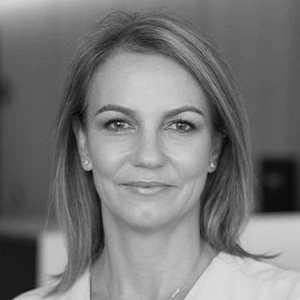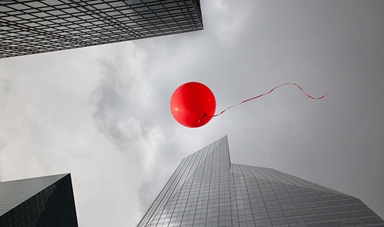Loading component...
At a glance
Su-Lin Ong
Chief Economist and Managing Director, RBC Capital Markets

Global prices are increasing quickly, with country-weighted Consumer Price Index accelerating in 2021 and running above 4 per cent year on year, while inflation expectations are rising.
The combination of strong demand as COVID-19 restrictions continue to ease worldwide and supply struggling to keep up, exacerbated by supply chain disruptions, is underpinning a lift in inflation.
Policy settings are fuelling these dynamics. While the global fiscal impulse is past its peak, it was historically large, and monetary settings remain ultra-easy, with liquidity continuing to be added.
In addition, changes to key policy frameworks by the US Federal Reserve and European Central Bank hint at a desire for higher inflation.
"Inflation will remain elevated for some months, but we think it is unlikely to be sustained at the current pace... If inflation continues to surprise to the upside and becomes more embedded and broad-based, central banks know what to do and can move quickly"
A long period of ultra-low rates drives a misallocation of capital. Fuelling asset prices, it forces riskier investment behaviour and encourages more debt, but is the alternative of deeper recession and higher unemployment any better?
Inflation will remain elevated for some months, but we think it is unlikely to be sustained at the current pace. Base effect will wane, supply chains are being restored and pent-up demand will be satiated.
There is also only so much catch-up in services that can occur. If inflation continues to surprise to the upside and becomes more embedded and broad-based, central banks know what to do and can move quickly.
Jo Masters
Chief Economist, EY Oceania

Inflation is back – well, at least talking about it is. Headline inflation rose by 3.25 per cent in the year to June.
There is undoubtedly asset price inflation (yes, the housing market), commodity and producer price inflation.
However, will this translate into sustained, generalised consumer price inflation? Never say never, but I think it’s transitory, and here’s why.
Underlying inflation was just 1.6 per cent in the June quarter.
Some of the price pressures we are seeing reflect base effects, but, more importantly, ongoing global supply chain dislocation, combined with government policies, have spruiked demand – the cost of renovating a home or buying a second-hand car, for example.
These markets will adjust in time, leaving a disinflationary pulse, particularly if the Australian dollar continues to appreciate.
Economic modelling shows that the key determinant of inflation is spare capacity in the labour market and wages growth. The jobs recovery has been strong, and the unemployment rate has fallen to 4.9 per cent.
However, that is above full employment, which is likely in the low fours, and annual wages growth is just 1.5 per cent.
"Some of the price pressures we are seeing reflect base effects, but, more importantly, ongoing global supply chain dislocation, combined with government policies, have spruiked demand... Markets will adjust in time, leaving a disinflationary pulse, particularly if the Australian dollar continues to appreciate"
The rule of thumb is that wage growth needs to be 3.5 per cent for inflation to be at 2.5 per cent, the mid-point of the Reserve Bank of Australia’s target.
Even with a doubling of wage growth, the outlook is not one of runaway inflationary pressures, and lockdowns have seriously dented the economic recovery.
What if I’m wrong? Well, policymakers are very good at tempering too-high inflation, and it would give central banks the opportunity to lift the cash rate off the floor, which is not such a bad thing.
Brendan Coates
Economic Policy Program Director, Grattan Institute

Prices have been flatlining for years, but now there is talk that inflation is back. How worried should we be?
There is little doubt we’ll see a spurt of inflation in the short term. The Reserve Bank of Australia (RBA) expects inflation to hit 3.25 per cent for the year to June. Inflation in the US rocketed back to 5.4 per cent in the year to June 2021.
However, a lot of that inflation will be temporary. Supply bottlenecks that emerged as the global economy opened up will ease in the coming months. In the depths of the pandemic panic last year, Australia’s Consumer Price Index actually fell by 1.9 per cent in the June quarter. A lot of inflation reported now simply reflects those past price falls.
"Sustained inflation is really only a risk when rising prices get factored into firms’ and workers’ expectations, but inflation expectations remain subdued, so it’s hard to be worried."
Sustained inflation is really only a risk when rising prices get factored into firms’ and workers’ expectations, but inflation expectations remain subdued, so it’s hard to be worried.
It is hard to see inflation expectations rising after inflation has persistently undershot the RBA’s inflation target band of 2 per cent to 3 per cent a year for half a decade. Market economists – according to the RBA’s own survey – appear to agree. They expect inflation two years from now to be just 2 per cent. Union officials are more pessimistic.
After years where inflation has undershot, rising inflation would be among the best signs yet that Australia is exiting the economic funk it has endured for much of the past decade. Having missed its inflation target for much of the past decade, the RBA would probably agree.
Meet the experts
Su-Lin Ong
Su-Lin Ong is chief economist and managing director with RBC Capital Markets. Prior to joining RBC in 1998, Ong was a fixed-income economist for Hambros Bank, and before that worked as an economic adviser at the Department of Prime Minister and Cabinet. She has recently joined the Committee for Economic Development of Australia’s economic policy committee and appointed to the Women in Banking and Finance board.
Jo Masters
As the chief economist for EY Oceania, Jo Masters is passionate about driving discussions around the traditional and disruptive forces that shape the economy. Her involvement in the banking sector has focused on economic research and trends, and currency strategy. Masters sits on the advisory committee for the Financy Women’s Index and teaches Economics 101 to SheStarts, an accelerator program for female entrepreneurs.
Brendan Coates
Brendan Coates is economic policy program director at the Grattan Institute, where he leads work on tax and transfer system reform, retirement incomes and superannuation, housing, macroeconomics and migration. He is a former macro-financial economist with the World Bank in Indonesia, as well as a former Australian Treasury official.

